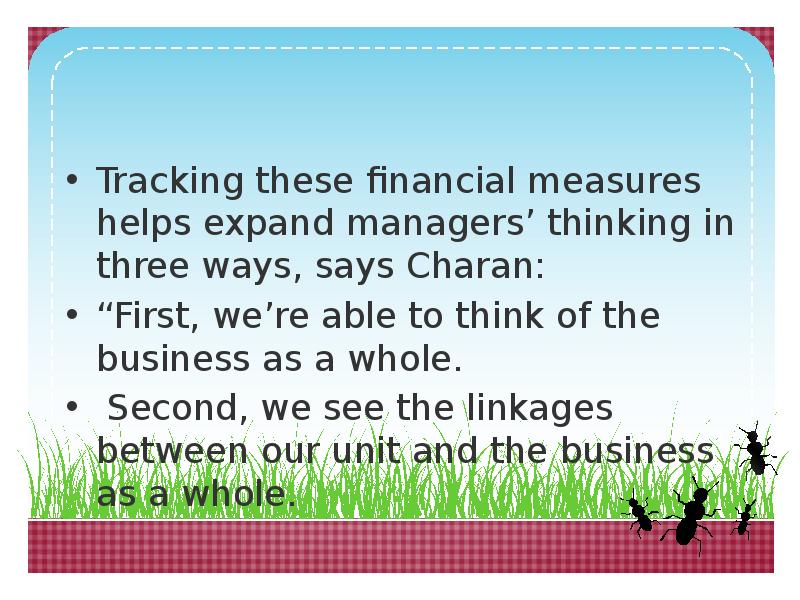The Fundamental Laws of Business Get a grip on any company, regardless of size презентация
Содержание
- 2. Get a grip on any company, regardless of size or location
- 3. An understanding of a few financial measures coupled with an enterprise-wide
- 4. Understand the Measures of Moneymaking Business acumen, writes Charan, is “the
- 5. Three measures can give you a good picture of whether and
- 6. Growth Growth in sales is usually—but not always—a positive sign. A
- 7. Everyone was excited when the company landed $4 million in new
- 8. Cash generation Cash is “a company’s oxygen supply,” writes Charan; it
- 9. “Cash generation is the difference between all the cash that flows into
- 10. Cash from operations depends largely on two factors: accounts receivable (money owed
- 11. Consultant Ram Charan, author of What the CEO Wants You to Know, urges
- 12. Charan recommends continually investigating where the cash is being generated, how
- 13. Return on assets (ROA) A company’s ROA is its net profit
- 14. ROA gives managers a glimpse of the often-missing third element of
- 15. “Below the senior management level,” explains Chuck Kremer, a financial trainer
- 16. Many people equate managing assets with watching gross profit (total sales
- 17. The other measure that needs to be monitored simultaneously is velocity— how
- 18. In times of intense price competition, for example, companies often see
- 19. Dell cut costs by reducing inventory and increasing its inventory turns -
- 20. “The problem with managers missing the ‘A,’ or assets part [of
- 21. Think Like an Owner By understanding growth, cash generation, and ROA,
- 22. Tracking these financial measures helps expand managers’ thinking in three ways,
- 23. Third, we’re better able to grasp what’s happening in the outside
- 24. A big-picture understanding of basic financial measures has very practical benefits,
- 25. Kroeger describes a telling incident that occurred during a meeting of
- 26. At Alcoa Packaging Machinery in Englewood, Colorado, a financial-literacy initiative helped
- 27. The company’s big picture gets factored into the decision making around
- 28. P&L statement,” Harper adds. “I can assure you that every employee
- 29. Growth, cash generation, and return on assets—these concepts, along with a
- 30. Скачать презентацию





























Слайды и текст этой презентации
Скачать презентацию на тему The Fundamental Laws of Business Get a grip on any company, regardless of size можно ниже:
Похожие презентации





























